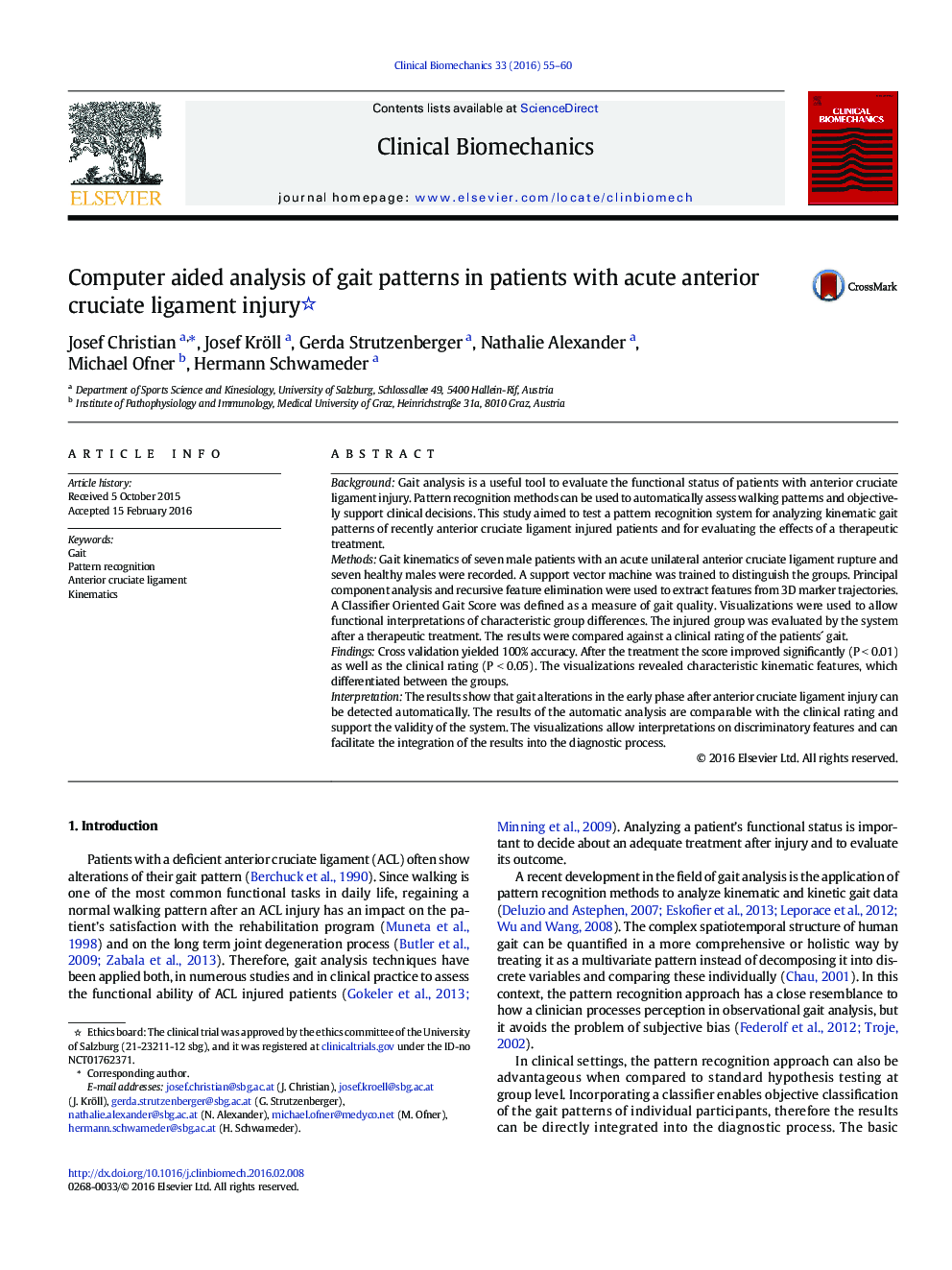| Article ID | Journal | Published Year | Pages | File Type |
|---|---|---|---|---|
| 4050132 | Clinical Biomechanics | 2016 | 6 Pages |
•Gait patterns of acute anterior cruciate ligament patients are automatically analyzed.•A Classifier Oriented Gait Score is introduced.•Visualizations unravel characteristic kinematic gait features.•The approach allows tracing the effects of a therapeutic treatment.•Comparisons with an observer based rating suggest the validity of the results.
BackgroundGait analysis is a useful tool to evaluate the functional status of patients with anterior cruciate ligament injury. Pattern recognition methods can be used to automatically assess walking patterns and objectively support clinical decisions. This study aimed to test a pattern recognition system for analyzing kinematic gait patterns of recently anterior cruciate ligament injured patients and for evaluating the effects of a therapeutic treatment.MethodsGait kinematics of seven male patients with an acute unilateral anterior cruciate ligament rupture and seven healthy males were recorded. A support vector machine was trained to distinguish the groups. Principal component analysis and recursive feature elimination were used to extract features from 3D marker trajectories. A Classifier Oriented Gait Score was defined as a measure of gait quality. Visualizations were used to allow functional interpretations of characteristic group differences. The injured group was evaluated by the system after a therapeutic treatment. The results were compared against a clinical rating of the patients´ gait.FindingsCross validation yielded 100% accuracy. After the treatment the score improved significantly (P < 0.01) as well as the clinical rating (P < 0.05). The visualizations revealed characteristic kinematic features, which differentiated between the groups.InterpretationThe results show that gait alterations in the early phase after anterior cruciate ligament injury can be detected automatically. The results of the automatic analysis are comparable with the clinical rating and support the validity of the system. The visualizations allow interpretations on discriminatory features and can facilitate the integration of the results into the diagnostic process.
